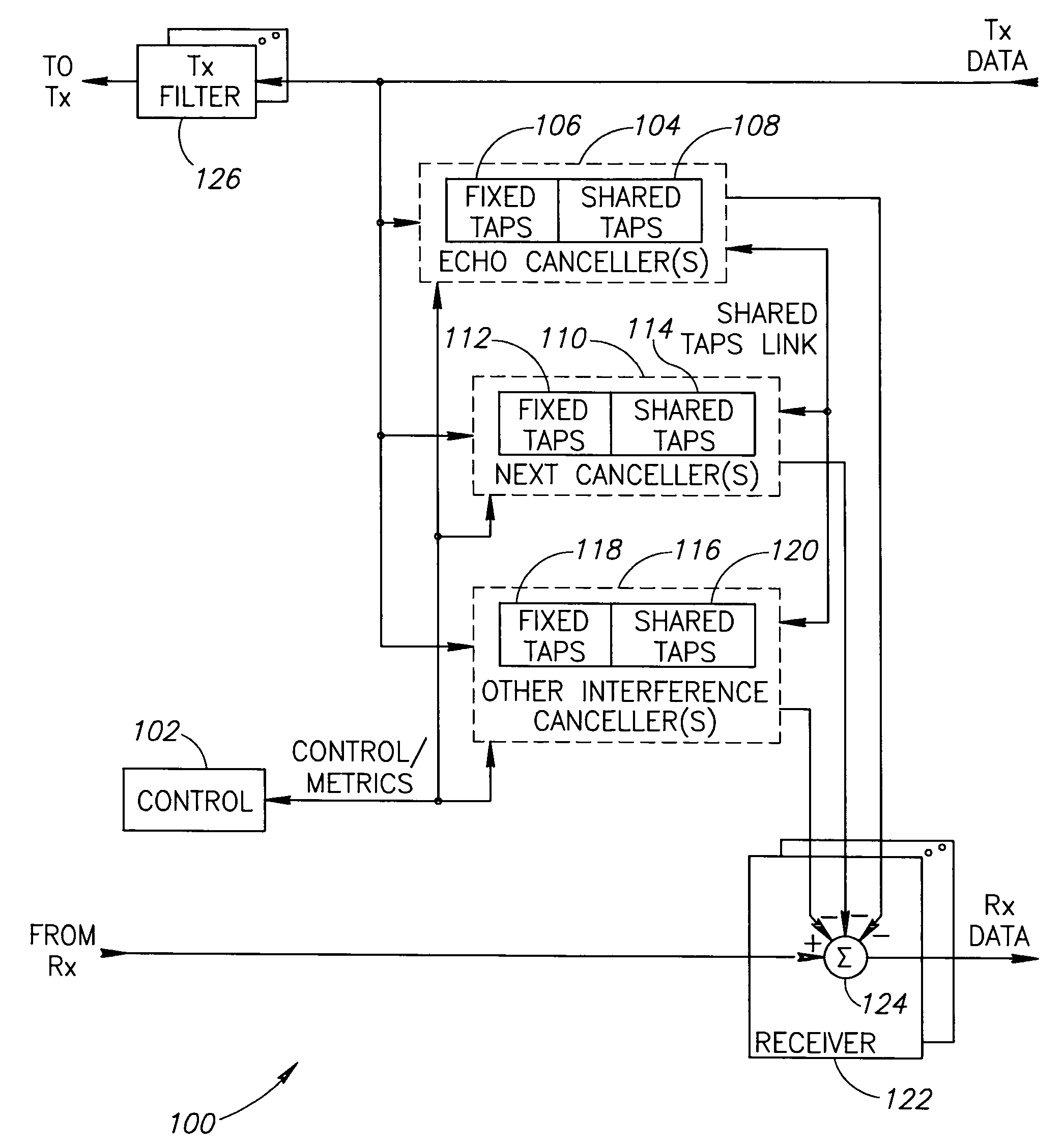Interference canceller tap sharing in a communications transceiver
a technology of communication transceiver and interference canceller, applied in the field of data communication, can solve the problems of significant reduction of hardware with the same or nearly the same consuming a substantial portion of digital silicon area, and affecting the performance of full length cancellers, so as to achieve significant power consumption, improve transceiver performance, and reduce silicon real estate.
- Summary
- Abstract
- Description
- Claims
- Application Information
AI Technical Summary
Benefits of technology
Problems solved by technology
Method used
Image
Examples
first embodiment
[0057]A block diagram illustrating the canceller tap sharing scheme of the present invention incorporating a pool of taps to be shared amongst the cancellers is shown in FIG. 3. For clarity sake, only a portion of the transceiver is shown. The portion shown, generally referenced 80, comprises transmit filters 94, receivers 92, controller 82, echo cancellers 86, NEXT cancellers 88, other interference cancellers 90 and filter tap pool 84. Note that the echo, NEXT and other interference cancellers are shown for example purposes only. It is contemplated that the application of the present invention to other noise impairment cancellers, such as FBE and FFE, is intended to be within the scope of the present invention.
[0058]In operation, the various noise impairment cancellers all share the taps in the unified bank of filter taps 84. Those cancellers that require additional taps over and above their default number of taps are assigned additional taps. The allocation of the filter taps is d...
second embodiment
[0059]A block diagram illustrating the canceller tap sharing scheme of the present invention incorporating cancellers having fixed taps and shareable taps to be shared amongst the cancellers is shown in FIG. 4. For clarity sake, only a portion of the transceiver is shown. The portion shown, generally referenced 100, comprises a transmit filters 126, receivers 122, controller 102, echo cancellers 104, NEXT cancellers 110 and other interference cancellers 116. Note that the echo, NEXT and other interference cancellers are shown here for example purposes only. It is contemplated that the application of the present invention to other noise impairment cancellers is within the scope of the present invention.
[0060]Each of the impairment cancellers comprises a plurality of filter taps. The filter taps are divided into two portions: a fixed portion and a shared portion. In particular, the echo cancellers comprise fixed taps 106 and shared taps 108; the NEXT cancellers comprise fixed taps 112...
PUM
 Login to View More
Login to View More Abstract
Description
Claims
Application Information
 Login to View More
Login to View More - R&D
- Intellectual Property
- Life Sciences
- Materials
- Tech Scout
- Unparalleled Data Quality
- Higher Quality Content
- 60% Fewer Hallucinations
Browse by: Latest US Patents, China's latest patents, Technical Efficacy Thesaurus, Application Domain, Technology Topic, Popular Technical Reports.
© 2025 PatSnap. All rights reserved.Legal|Privacy policy|Modern Slavery Act Transparency Statement|Sitemap|About US| Contact US: help@patsnap.com



